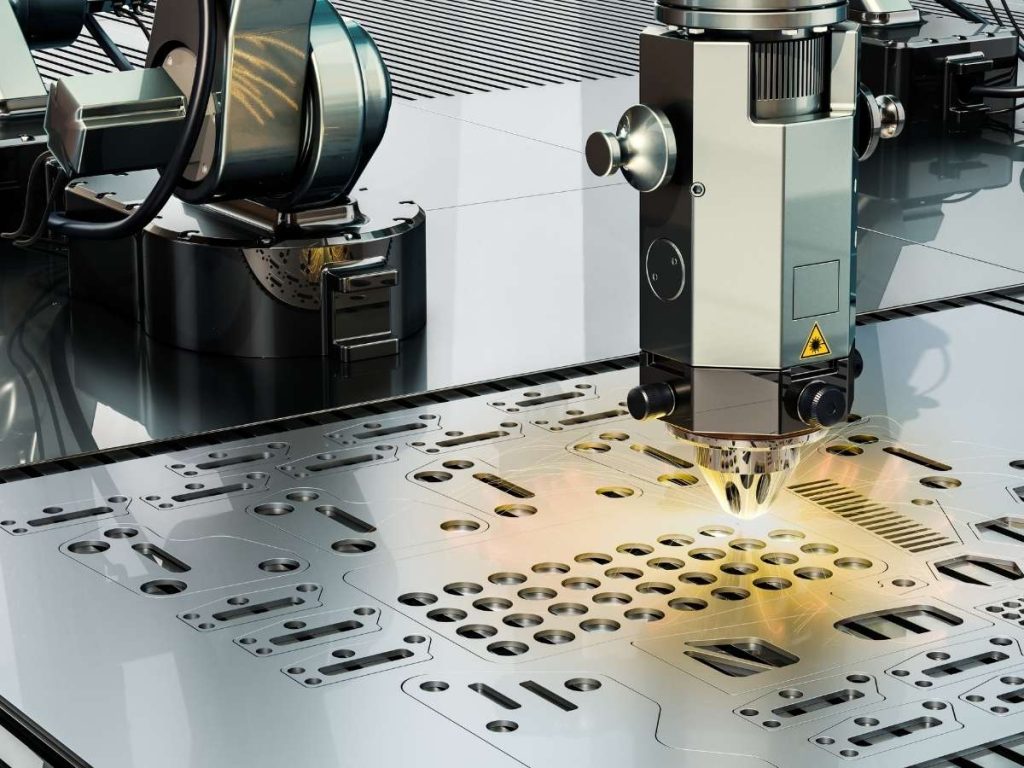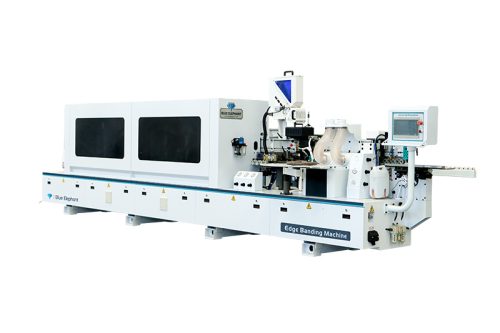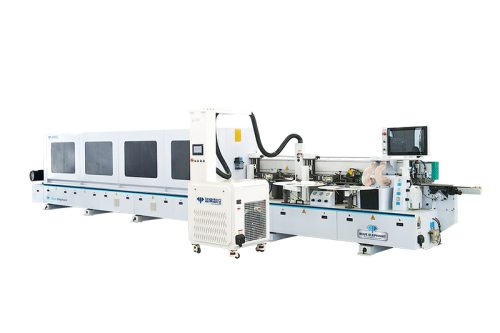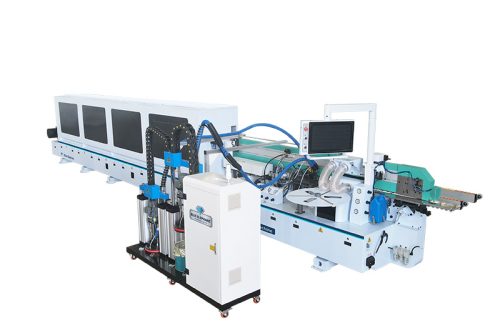I remember the first time I had to choose between a CNC machine and a laser cutter for my business. It felt like a high-stakes decision—one that could impact production speed, costs, and quality.
With so many technical details, I wasted hours researching, only to end up more confused.
If you’re in the same boat, you’re not alone. Many business owners struggle to decide which machine fits their needs best.
I’ve been through this process, tested both machines and know what works in real-world applications. This article is based on hands-on experience, not just specs and marketing claims.
Here’s what you’ll get:
- A clear breakdown of CNC vs. laser cutters
- How each one impacts speed, precision, and costs
- A no-nonsense comparison to help you make a confident choice
So, let’s get started!
1. What is CNC?
If you’ve ever struggled with precision cuts, slow production, or wasted materials, you’re not alone. I remember the frustration of trying to scale my production, only to hit bottlenecks because my tools weren’t up to the task. That’s when I turned to CNC machining—a game-changer in efficiency and accuracy.
But what exactly is CNC, and how does it work? Let’s break it down:
How They Work
CNC (Computer Numerical Control) machines are automated cutting tools that operate with pinpoint precision. Instead of manually guiding the cutter, you program the machine using CAD (Computer-Aided Design) software. The CNC system then follows the exact instructions, cutting, drilling, or shaping your materials with extreme accuracy.
Think of it as having a highly skilled worker who never gets tired, never makes mistakes, and follows your designs flawlessly—every single time.
If you want consistent, high-quality production without human error, CNC is a tool you can’t ignore.
Types of CNC Machines
Not all CNC machines are the same. Depending on your needs, you’ll find different types, each suited for specific applications:
- CNC Routers: Ideal for cutting, engraving, and shaping wood, plastics, and soft metals. Great for sign-making, cabinetry, and custom parts. Brands like Blue Elephant are well-known for their reliability and precision in this space.
- CNC Mills: Heavy-duty machines that handle precise metal cutting, drilling, and shaping. Perfect for manufacturing industries, aerospace, and automotive parts.
- CNC Plasma Cutters: Best for slicing through thick metal sheets quickly using a plasma torch. Used in industrial metal fabrication.
- CNC Lathes: Designed for cylindrical parts, like screws, bolts, and precision-engineered metal components.
- CNC Waterjet Cutters: Uses high-pressure water to cut through a wide range of materials, even stone and glass, without heat damage.
Each of these machines serves a different purpose, and choosing the right one can mean the difference between wasted money and a smart investment.
Materials CNC Machines Can Cut
CNC machines aren’t just versatile—they’re workhorses. You can process a wide range of materials with incredible precision, including:
- Metals: Aluminum, steel, brass, titanium
- Wood: Hardwoods, softwoods, plywood, MDF
- Plastics: Acrylic, PVC, ABS, polycarbonate
- Foam & Composites: Carbon fiber, fiberglass
- Stone & Glass: Only with waterjet CNCs
If you work with metal fabrication, woodworking, or manufacturing, CNC technology gives you the power to cut, shape, and create without limits.
Pros and Cons of CNC Machines
Every tool has strengths and weaknesses. Before making a decision, here’s what you need to know:
Pros:
- Unmatched Precision: Cuts with accuracy down to fractions of a millimeter.
- Scalability: Once programmed, you can produce thousands of identical parts effortlessly.
- Reduced Waste: Minimizes material loss by following exact designs.
- Labor Savings: Automates tasks, reducing reliance on manual labor.
- Compatible with Many Materials: Works on metals, wood, plastics, and more.
Cons:
- Higher Initial Cost: CNC machines require a bigger upfront investment.
- Steep Learning Curve: You’ll need trained operators or time to master programming.
- Ongoing Maintenance: Regular servicing is essential to keep the machine running smoothly.
- Limited Creativity in Hands-on Work: If you enjoy handcrafting, CNC takes away the manual touch.
2. What is Laser Cutter?
I remember when I first considered adding a laser cutter to my business. The idea of cutting with pure light seemed almost futuristic. But once I saw the precision, speed, and versatility of laser cutting in action, I knew it could completely change the way I handled production.
If you’re looking for a way to cut, engrave, or etch with extreme accuracy, laser cutting might be the perfect solution. But how does it actually work? Let’s break it down:
How Laser Cutters Work
Instead of using physical blades, laser cutters use a high-powered laser beam to slice through materials. The laser heats, melts, or vaporizes the surface, creating incredibly clean and precise cuts.
The best part? No direct contact with the material. This means less wear and tear on tools, no risk of mechanical failure, and nearly flawless edges without rough cuts or splintering.
Laser cutting is widely used in industries that demand precision, efficiency, and minimal waste—from metal fabrication and signage to aerospace and medical device manufacturing.
Types of Laser Cutters
Not all laser cutters are the same. The type of laser determines what materials you can cut and how deep you can go. Here are the three main types:
- CO2 Laser Cutters: Best for non-metal materials like wood, acrylic, plastic, and leather. These are widely used in sign-making, engraving, and packaging industries.
- Fiber Laser Cutters: Designed for cutting metals such as stainless steel, aluminum, brass, and copper. Commonly used in metal fabrication, automotive, and aerospace industries.
- Nd:YAG (Neodymium-Doped Yttrium Aluminum Garnet) Lasers: Highly focused and powerful, these are often used for industrial applications requiring deep metal cutting or welding.
Each laser type serves a specific purpose, and choosing the right one can make a huge difference in your production capabilities.
Materials That Laser Cutters Can Cut
Laser cutters work with a variety of materials, but their effectiveness depends on the type of laser:
- Metals: Stainless steel, aluminum, brass, copper (best with fiber and Nd:YAG lasers)
- Wood: Plywood, MDF, hardwood, softwood (best with CO2 lasers)
- Plastics: Acrylic, polycarbonate, ABS, PVC (CO2 laser recommended, but some plastics release toxic fumes)
- Paper & Cardboard: Used in packaging, prototyping, and design applications
- Glass & Ceramics: Etching and engraving applications, but not deep cutting
If your business needs high-precision cuts without mechanical wear, laser cutting can provide speed, efficiency, and nearly perfect edges.
Pros and Cons of Laser Cutters
Before investing in a laser cutter, it’s important to weigh the benefits and potential drawbacks.
Pros:
- Extreme Precision: Can cut detailed patterns and intricate designs with micrometer-level accuracy.
- Non-Contact Cutting: Reduces wear and tear on tools, preventing mechanical damage.
- Fast Production Speed: Works significantly faster than traditional cutting methods, especially for thin materials.
- Minimal Waste: Cuts with a fine beam, reducing excess material loss.
- Versatile Applications: Works on metals, plastics, wood, glass, and more.
Cons:
- Higher Cost for Industrial Use: Fiber and Nd:YAG lasers can be expensive, with steep initial investments.
- Limited Material Thickness: Struggles with very thick or dense materials compared to CNC machines.
- Fume & Gas Emissions: Cutting certain plastics and composites can produce hazardous fumes, requiring proper ventilation.
- Energy Consumption: Industrial lasers require significant power to operate.

3. Key Differences Between CNC vs Laser Cutter
When I first had to choose between a CNC machine and a laser cutter, I quickly realized—it wasn’t just about cutting materials. It was about speed, precision, cost, and efficiency. Each machine has its strengths, but making the wrong choice could lead to wasted time and money. Here’s how they compare.
| Feature | CNC Machine | Laser Cutter |
| Cutting Mechanism | Uses physical cutting tools (drills, mills, routers) | Uses a high-powered laser beam |
| Material Contact | Direct contact with the material | Non-contact cutting |
| Precision & Detail | High precision, but limited in fine details | Extremely high precision, ideal for intricate cuts |
| Cutting Speed | Slower, especially for complex shapes | Faster for thin and medium materials |
| Material Thickness | Can cut through thick materials | Best for thin to medium materials |
| Material Compatibility | Works with wood, metal, plastics, composites, and foam | Best for wood, plastics, thin metals, and acrylic |
| Edge Finish | May require sanding or post-processing | Clean, smooth edges with minimal finishing needed |
| Initial Cost | Higher due to complex mechanical parts | Generally lower, except for industrial fiber lasers |
| Maintenance | Requires tool changes and periodic calibration | Requires lens cleaning and occasional realignment |
| Waste & Efficiency | Produces more waste due to material removal | Minimal waste, more material-efficient |
| Best for | Heavy-duty cutting, deep carving, 3D shaping | Engraving, precision cutting, and detailed designs |
I learned this lesson the hard way, buying a CNC router when I needed a laser cutter for precision engraving. Each machine has a place, but choosing the right one depends on your materials, production speed, and project goals. Understanding these differences ensures you invest wisely in the right tool.
4. 5 Tips for Choosing The Right Machine For Cutting Needs
Choosing between a CNC machine and a laser cutter isn’t just about specs—it’s about your business, your workflow, and your bottom line.
I’ve been in your shoes, weighing the options, trying to figure out which investment would give me the best return. If you want to make the right choice without wasting time or money, here’s what you need to consider:
#1 Material and Project Requirements
What are you cutting daily? Your material type and thickness should be your first deciding factor.
- If you’re working with thick metals, hardwoods, or dense composites, a CNC machine is your best bet.
- If your business relies on precision engraving, intricate cuts, or smooth edges, a laser cutter is the way to go.
I once tried using a CNC router for detailed acrylic signage. Big mistake—the edges were rough, and post-processing took forever. If I had gone with a laser cutter from the start, I would’ve saved hours of work.
#2 Cost vs. Long-Term ROI
A machine is an investment, not just an expense. But the price tag doesn’t tell the whole story—operating costs, maintenance, and material waste add up over time.
- CNC Machines: Higher initial cost but ideal for heavy-duty work and high-volume production.
- Laser Cutters: Generally lower cost, less material waste, and faster for thin materials.
If your projects require a mix of deep cutting and detailed engraving, you might even need both machines to maximize efficiency.
#3 Production Volume and Speed Needs
Time is money. If your business demands fast production and tight deadlines, you can’t afford a slow machine.
- CNCs are better for long, continuous cutting jobs, where material thickness is a factor.
- Laser cutters work much faster for thin materials and fine engraving.
For my business, I realized that batch production of thick wooden parts made sense on a CNC, while laser cutting was better for rapid engraving and thin sheet processing.
#4 Maintenance and Operator Training
The last thing you need is constant downtime due to maintenance issues or a steep learning curve. CNC machines need regular tool changes, lubrication, and calibration. Laser cutters require lens cleaning and occasional realignment, but fewer moving parts mean fewer mechanical failures.
If you don’t have a trained team, laser cutters have a faster learning curve, whereas CNC machines require skilled operators or extensive training.
#5 Safety and Work Environment
Safety isn’t just a checkbox—it’s a business necessity. CNC machines generate dust, debris, and noise, requiring proper ventilation and protective gear. Laser cutters produce fumes, especially when cutting plastics, so an exhaust system is a must.
If you’re working in a small space, a laser cutter’s compact and quiet operation might be a better fit. But if you have an industrial setup, Blue Elephant offers CNC machines with power that can take your production to the next level.
Conclusion
Back when I was stuck choosing between a CNC machine and a laser cutter, I didn’t realize how much was at stake. Now, after years of working with both, I can confidently say, the right machine isn’t just a tool, it’s a game-changer for your business.
Whether you need deep cuts and power (CNC) or high-speed precision (laser), you now know how to make an informed decision.
What’s next for your business?
Let’s find the right cutting solution together. Contact us today—we’d love to help.












